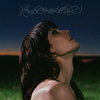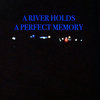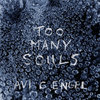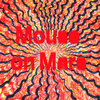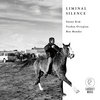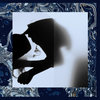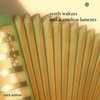Yawar Fiesta by Annette Vande Gorne, Werner Lambersy
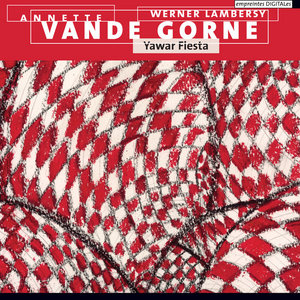
[EN]
Annette Vande Gorne / Werner Lambersy, “Yawar Fiesta” (2006-12)
7.1-channel fixed medium
To Francis Dhomont
Can space written and performed be a factor of expressiveness and dramatization?
Music? Opera? Although this project does not feature a single singer on stage (a stage that will be human and silent), most of its audio materials derive from the voice; the studio records the singers (as in cinema) and transforms their voices.
This is not an electroacoustic piece (with its usual research work into sonic materials and abstract composing); it is the dramatization of a text through, among other means, spatial placement and moving spatial motifs. “Technological” music reconnects with the lyrical tradition of the opera.
Synopsis The libretto is based on Blood Day, yawar fiesta in Quechua, celebrated each year in villages of the Peruvian Andes that were founded by the Spanish. On that day, a corrida is held where, for the final fight, a condor captured by Amerindians in the mountains is pitted against a bull raised by the villagers. The text symbolically draws ties between this match and other battles, like the spiritual battle between being and having, the social battle between poverty and wealth, and the political battle between the ruling and the ruled. Rites and the arts are the only things that can bring people together.
Organization and Sonicography The libretto was written in the late 1990s by Werner Lambersy, one of the major French-speaking poets (his works have been translated in over 30 languages). It takes the incantatory and ritualistic form of an ancient Greek tragedy, and does so to picture the duels that live inside us, opposite concepts of society and life, symbolized by a fight between a condor and a bull. Duels between poverty and the power of money, or between the attraction of desire and brutal force, for example.
The Amerindian chief, with his reassuring bass tone and calm recitation, embodies spiritual wisdom whose eternal strength always gets the upper hand, in time, on material, political and economical contingencies. The lamento of the Amerindian women’s choir — “Lamento (Chœur des femmes I)” — sticks close to the singing intonations of the voice, its vibrato, its colours, to express the universal lament of helpless mothers against injustice. Act II — “Taureau (Le défi)” — takes us to the heart of Western society, panem et circences (“bread and circuses” or “bread and games”), brash and merciless, through the declamatory and incisive voice of the tenor. In the bourgeois women’s choir — “Combattimento (Chœur des femmes II)” —, dramatic singing and lyricism gradually impose themselves like some undeniable truth. This yields a hybrid form of writing that pairs spaces, energies, morphologies, and harmonic colours. The final monologue (“Monologue final”) is organized into two contradicting inner voices that inhabit us: the voice of power always ready to crush and possess, and the voice of lightness and spirituality. The poetic and timeless qualities of this libretto opens the way to symbolic, archetypal writing, both for the text and its translation into music. This approach makes the deeper meaning of the text clearer for the listener without stopping at the literal meaning of the anecdote. The characters are symbolically split into two peoples with opposite notions of the human being and society. They express what is important and, like in any poetical text, meaning seeps in from beyond the words — not an individual meaning but a collective one, strengthened by the presence of the choir that translates the deeper nature of Man in the vast, quasi-sacred fashion of ancient Greek drama.
One of the goals of this manifestation, beside the artistic aspect of the work, is to demonstrate that space is a musical parameter, like pitch, duration, dynamics, and timbre, and it should be used in composition. Strong relationships between space, character and action will allow us to develop the listener’s spatiotemporal perception.
Staging “Yawar Fiesta” is an opera designed to be staged on video. The work consists of an audio projection of the spatialized acousmatic composition on an array of loudspeakers paired with a visual projection of three-dimensional images (synthesized or treated) for virtual reality helmet.
Therefore, the stage is silent and there are no singers on it. The singers recorded vocal improvisations in the studio according to the composer’s directions. The whole libretto is heard through loudspeakers, and these loudspeakers are seen as sources, characters, and space-supports.
The sound space is created by a minimum of 7 loudspeakers set around the audience. Each spatial shot, each movement is symbolically assigned to a character, an action or an affect that marks the “inner location” from which they are speaking according to the text.
— [English translation: François Couture, xi-16]
“Yawar Fiesta” was realized between 2006 and ’12 at the Métamorphoses d’Orphée studio of Musiques & Recherches in Ohain (Belgium), and premiered on October 28, 2012 as part of the 19th festival L’Espace du son at Théâtre Marni in Brussels (Belgium). The work was realized with support from the Service de la musique classique et contemporaine du Service de la Création artistique de la Fédération Wallonie-Bruxelles. Thanks to: Musiques & Recherches. Recorded voices: Lorenzo Carola, tenor (“Taureau (Le défi)”); Paul Alexandre Dubois, baritone (“Condor (La veillée)”), “Taureau (Le défi)”); Madiha Figuigui, mezzo-soprano (“Combattimento (Chœur des femmes II)”); Nicolas Ischerwood, bass (“Condor (La veillée)”); Charles Kleinberg, narrator (“Monologue final”); Werner Lambersy, narrator (“Taureau (Le défi)”, “Monologue final”); Annette Vande Gorne, contralto (“Combattimento (Chœur des femmes II)”); Françoise Vanhecke, soprano (“Lamento (Chœur des femmes I)”, “Combattimento (Chœur des femmes II)”).
[FR]
Annette Vande Gorne / Werner Lambersy, «Yawar Fiesta» (2006-12)
support 7.1 canaux
À Francis Dhomont
L’espace, écrit et interprété, est-il facteur d’expressivité, de dramatisation?
Musique? Opéra? Même si le projet ne comporte aucun chanteur sur scène, laquelle sera humaine et silencieuse, une majorité de matériau sonore dérive de la voix: le studio enregistre les chanteurs (comme au cinéma) et transforme les voix.
Non pas une œuvre électroacoustique (avec ses recherches de matières et d’écritures abstraites), mais la dramatisation d’un texte par, entre autres, le placement et les figures spatiales en mouvement. La musique «technologique» retrouve un lien avec la tradition chantée de l’opéra.
Synopsis À partir d’un fait réel, la fête du sang (yawar fiesta, en quechua) qui a lieu chaque année dans certains villages des Andes péruviennes fondés par les Espagnols, une fête qui oppose dans le dernier combat d’une corrida, un condor capturé dans les montagnes par les Amérindiens, à un taureau élevé par les villageois, le texte associe, symboliquement, d’autres combats: celui, spirituel, entre l’être et l’avoir, celui, sociétal, entre pauvreté et richesse, celui, politique, entre peuples dominés et dominants. Seuls les rites et l’art rassemblent.
Structure et mise en son Le livret de la fin des années 1990 de Werner Lambersy, un des grands poètes francophones (il est traduit en une trentaine de langues), écrit sur le mode incantatoire et rituel d’une tragédie antique, propose les combats duels qui nous habitent, concepts de sociétés et de vie opposés, symbolisés par le combat d’un condor et d’un taureau. Celui, par exemple, entre pauvreté et puissance de l’argent; celui aussi de l’attraction du désir et de la force brute.
Le chef des Amérindiens, au timbre de basse rassurant, personnifie par une déclamatoire posée la sagesse spirituelle dont la force éternelle l’emporte toujours, dans la durée, sur les contingences matérielles, politiques et économiques. Le lamento du chœur des femmes amérindiennes — «Lamento (Chœur des femmes I)» — reste proche des intonations chantées de la voix, de son vibrato, de ses couleurs, afin d’exprimer l’universelle plainte des mères impuissantes face à l’injustice. Le deuxième acte — «Taureau (Le défi)» — nous transporte au cœur de la société occidentale, celle du panem et circenses (‘pain et jeux du cirque’ ou «du pain et des jeux»), bruyante et sans pitié, par la voix claironnante et incisive du ténor. Dans le chœur des femmes bourgeoises — «Combattimento (Chœur des femmes II)» —, le chant dramatique et le lyrisme se sont peu à peu imposés, comme une évidence inévitable. En résulte une écriture hybride, qui associe espaces, énergies, morphologies et couleurs harmoniques. Le «Monologue final» se structure en deux voix intérieures qui, contradictoires, nous habitent: celle du pouvoir toujours prêt à écraser, à posséder et celle de la légèreté de l’être spirituel. La valeur à la fois poétique et intemporelle de ce livret permet une écriture symbolique et archétypale tant au niveau du texte que de sa traduction musicale. Cela rend plus clair pour l’auditeur le message profond véhiculé par le texte sans s’arrêter au premier degré de l’anecdote. Les personnages, symboliquement divisés entre deux peuples où s’opposent deux conceptions, à la fois, de l’être humain et de la société, expriment l’essentiel et comme dans tout texte poétique, le sens transparaît au-delà des mots. C’est un sens collectif plutôt qu’individuel renforcé par la présence du chœur qui traduit, à la manière ample et quasi sacrée de la tragédie antique, la nature profonde de l’homme.
Outre la dimension artistique de l’œuvre, un des objectifs de cette manifestation, est de prouver que l’espace est un paramètre musical, au même titre que la hauteur, la durée, la dynamique et le timbre. Il s’agit de composer avec ce nouveau paramètre. On développera ainsi la perception spatiotemporelle de l’auditeur par la liaison évidente espace-personnage-action.
Mise en scène «Yawar Fiesta» est opéra conçu pour être scénographié en vidéo. L’œuvre consiste en une projection auditive de la composition acousmatique spatialisée sur un ensemble de haut-parleurs, couplée à une projection visuelle d’images synthétisées ou traitées en trois dimensions pour casques de réalité virtuelle.
La scène est donc muette, sans chanteurs. Ceux-ci ont enregistré en studio, sous la direction de la compositrice, des improvisations vocales. Tout le texte est entendu à partir des haut-parleurs, considérés comme sources, personnages et support-espace.
L’espace sonore est celui de 7 haut-parleurs minimum disposés autour du public. Chaque plan spatial, chaque mouvement est symboliquement attribué à un personnage, à une action, à un affect pour marquer le «lieu intérieur» d’où ils parlent, selon le texte.
— [xi-16]
«Yawar Fiesta» a été réalisée de 2006 à 2012 au studio Métamorphoses d’Orphée de Musiques & Recherches à Ohain (Belgique) et a été créée le 28 octobre 2012 dans le cadre du 19e festival L’Espace du son au Théâtre Marni (Bruxelles, Belgique). L’œuvre a été réalisée avec l’aide du Service de la musique classique et contemporaine du Service de la Création artistique de la Fédération Wallonie-Bruxelles. Merci à: Musiques & Recherches. Voix enregistrées: Lorenzo Carola, ténor («Taureau (Le défi)»); Paul Alexandre Dubois, baryton («Condor (La veillée)»), «Taureau (Le défi)»); Madiha Figuigui, mezzo-soprano («Combattimento (Chœur des femmes II)»); Nicolas Ischerwood, basse («Condor (La veillée)»); Charles Kleinberg, récitant («Monologue final»); Werner Lambersy, récitant («Taureau (Le défi)», «Monologue final»); Annette Vande Gorne, contralto («Combattimento (Chœur des femmes II)»); Françoise Vanhecke, soprano («Lamento (Chœur des femmes I)», «Combattimento (Chœur des femmes II)»).
Tracklist
Credits
empreintes DIGITALes 2017
Image: Stefano Giuliani
IMED 17142_NUM
